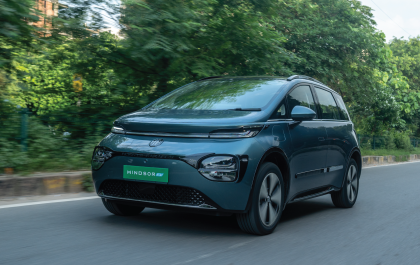How the eco movement in Studio Ghibli movies is inspiring youth and catalyzing positive change
By Sara Kabir
Studio Ghibli, renowned for its captivating story-telling and breath-taking animation, has long been recognized for their profound exploration of environmental themes. By seamlessly blending fantastical elements with poignant messages, Studio Ghibli manages to communicate complex environmental issues in a relatable and thought-provoking manner that resounds with the youth of today.
These films transport the viewers into enchanting realms full of lush forests and breath-taking landscapes, providing an escape from reality while simultaneously addressing contemporary environmental challenges. The captivating animations prove that even in the realm of fantasy, it is possible to tackle complex ecological issues with widespread appeal, merging entertainment with a deeper message. With their rich tapestry of narratives, Studio Ghibli inspires audiences, particularly the youth, to become more eco-conscious and catalyze positive change in the world.
ENVIRONMENTAL AWARENESS
Studio Ghibli movies consistently weave environmental awareness into their narratives, capturing the beauty and fragility of the natural world. One such example is found in Princess Mononoke, where the clash between human progress and the preservation of nature takes center stage. Set in a pristine forest threatened by industrialization, the film explores the consequences of human greed and its detrimental impact on the environment. The Forest Spirit’s presence, which symbolizes the delicate balance of nature, is disrupted by human exploitation. By personifying the spirits of nature and portraying the intricate balance between humans and their environment, Princess Mononoke imparts a powerful lesson about the importance of coexistence and respect for nature’s harmony.
Similarly, in another award-winning Ghibli movie, Spirited Away, when a polluted river spirit visits the magical bath house, the main character, Chihiro tries her best to remove the debris and pollution from its body despite the spirit’s repulsive appearance, and eventually reveals its true form as a majestic river spirit. This transformative act not only cleanses the spirit but also symbolizes the potential for regeneration and healing in polluted environments. The spirit represents the consequences of human negligence and serves as a reminder of the importance of ecological equilibrium.
SUSTAINABLE LIFESTYLES
The movies also emphasize the significance of sustainable lifestyles and the interconnectedness of all living beings. My Neighbor Totoro exemplifies this ethos through its portrayal of the two sisters Mei and Satsuki’s profound connection to the natural world. Set in rural Japan, the movie celebrates the joy of simple living and encourages viewers to appreciate the wonders of nature. From cultivating their own food to becoming friends with forest spirits, the characters demonstrate the transformative power of embracing sustainable practices and finding harmony in a shared eco-system.
By immersing viewers in a world where magical creatures exist alongside everyday life, the movie encourages children and adults alike to reconnect with the natural world. It reminds us to appreciate the beauty of our surroundings and protect it for future generations.
CONSERVATION AND PRESERVATION
Another crucial aspect of the eco-friendly movement in Studio Ghibli movies lies in their exploration of conservation and preservation efforts. In Ponyo, the film highlights the dire consequences of human negligence by showcasing the pollution and destruction of the ocean. The story follows a young “goldfish” who desires to become human and the subsequent impact her actions have on the delicate balance of marine life. Through its illustration of the devastation caused by human actions and emphasis on the protection of marine biodiversity, Ponyo instils a sense of urgency in young viewers to protect and preserve our natural resources.
EMPOWERING THE YOUTH
Studio Ghibli movies often feature young protagonists who become catalysts for change, empowering young viewers to recognize their own potential to make a difference. Nausicaä of the Valley of the Wind presents a visionary young princess who embodies courage, empathy, and a deep reverence for nature. She advocates for understanding and cooperation rather than resorting to violence.
The movie highlights the importance of preserving the environment and finding peaceful solutions to conflicts. By championing compassion for all living beings, Ghibli instils a sense of eco-consciousness in young viewers. Through her unwavering determination to protect her people and restore the environment, Nausicaä inspires audiences to take action and confront the ecological challenges that lie ahead. Nausicaä’s battle reminds us that in order to create a sustainable future, we must work with nature, instead of against it. The film beautifully illustrates the transformative power of youth, urging young viewers to become proactive agents of change.
CONCLUSION
The movies by Studio Ghibli have masterfully captured the essence of the eco-movement, crafting narratives that resonate with audiences and inspire them to embrace eco-consciousness and create a positive change. Through their enchanting tales and striking visuals, these films evoke emotions, provoke introspection, and ignite a sense of responsibility among the youth.
By showcasing the consequences of environmental negligence, promoting sustainable practices, and empowering young protagonists, Studio Ghibli instils in its viewers a deep appreciation for nature and a desire to create positive change. The legacy of the eco-movement in Ghibli movies transcends the realm of entertainment, leaving an indelible mark on young minds and fostering a generation that is passionate about protecting our planet.
- tarin fatemahttps://mansworldbangladesh.com/author/tarin/
- tarin fatemahttps://mansworldbangladesh.com/author/tarin/
- tarin fatemahttps://mansworldbangladesh.com/author/tarin/
- tarin fatemahttps://mansworldbangladesh.com/author/tarin/













